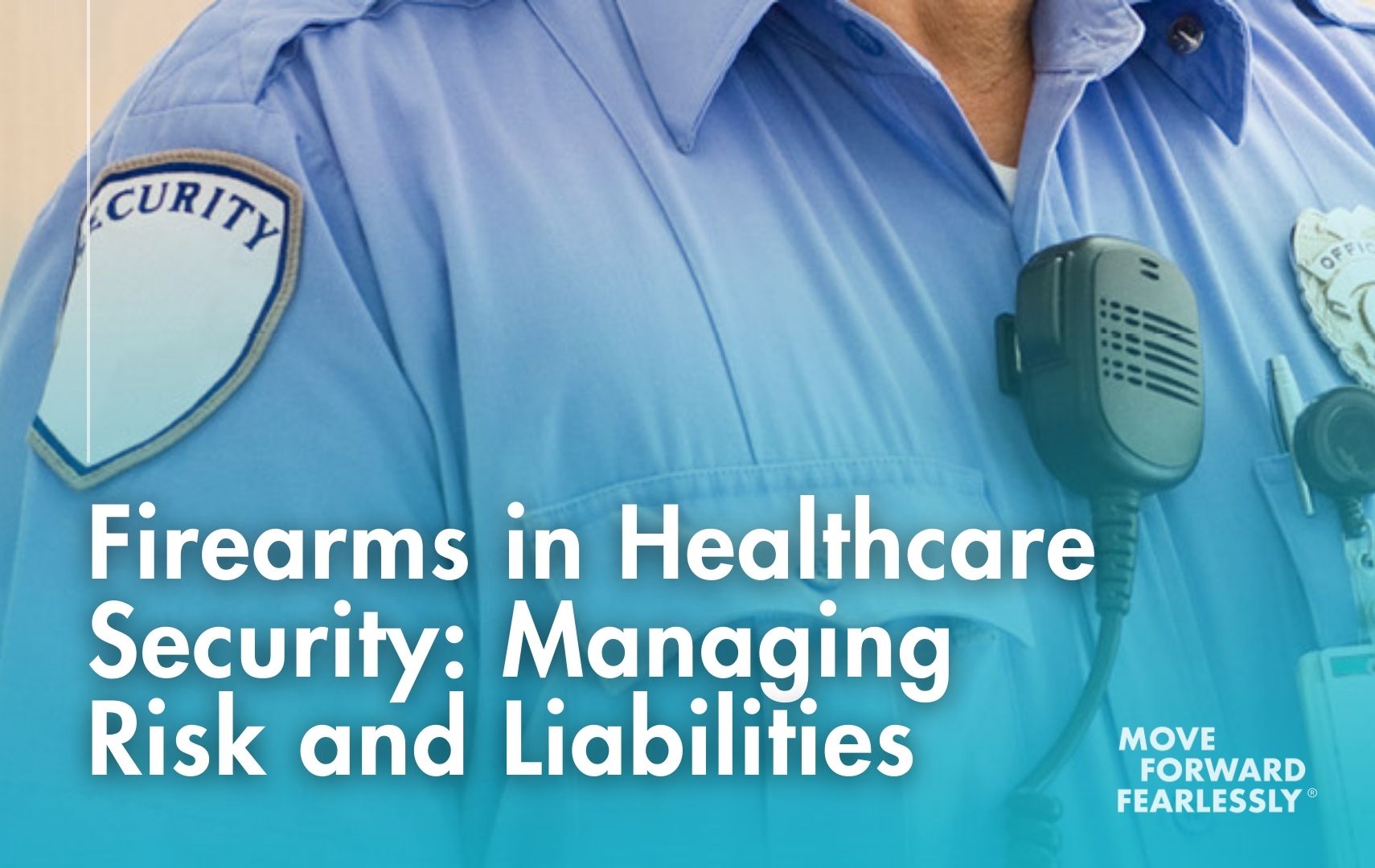
The concern of workplace violence is one that touches everyone, and healthcare facilities are no exception. A hospital security team equipped with firearms has the potential to deter an imminent threat or completely interrupt an already-in-progress situation; however, careful consideration must be taken by multiple levels within the organization when it comes to the weighty decision of whether to arm its security staff.
Even with enhanced security protocols, many challenges persevere. A multitude of perspectives, including those of experts from security, law enforcement, administrative leadership, human resources and risk management services should be considered before deciding if firearms should be included in your healthcare facility’s security program. Our team understands this sensitive issue from a risk management perspective; we are here to offer several factors regarding healthcare facility safety for you to consider, as well as direct industry experience to help you move forward fearlessly in protecting your patients, employees and establishments.
MODERN HEALTHCARE
According to the International Association for Healthcare Security and Safety, responsibility for the introduction of firearms in the security program falls onto healthcare facility administration. The development of policies, standards for use and storage of equipment, commitment to current training programs, and application of enhanced screening protocols for all levels of staff involved are required prior to official implementation.
Be thorough. Proper operations analysis is a big component when considering armed security and its associated protocols. Evaluate how firearms implementation impacts all facets within your business or organization. As a result, that information will provide insights to help guide and determine appropriate next steps during the decision-making process. We encourage administration to seek advice and counsel from law enforcement, legal/risk management and human resources. For more insights, consider addressing the following factors:
- The environmental profile and crime index of both the healthcare facility and the community it serves. This includes the difference between crimes against people versus crimes against property, as well as looking specifically at internal security incident data regarding trending levels of violent crime.
- Historical situations in which firearms may have been a deterrent, as well as actual encounters with firearms at a specific healthcare facility or within its community.
- Trends in attitudes, perceptions and expectations on both the local and national levels in regard to armed security.
- Expectations of the role of armed staff (i.e., deterrent value versus engagement with an active assailant).
- Availability of community law enforcement and a general awareness of their response time to an incident.
GIVING YOU CLARITY
So, what are the differences, advantages and drawbacks in using firearms to keep your facilities safe?
Investigating security measures at similar healthcare facilities in terms of their location, size, community and services can be a helpful weigh in when determining the need for additional safety measures. For example, some facilities offer high-risk services that inherently face a higher risk of violence and may require heightened security in order to keep patients and staff safe.
Some advantages to armed healthcare facility security include increased staff confidence, demonstration to the community that patient protection is a priority, potentially deterring or deescalating a dangerous situation or, in extreme cases, completely stopping an active shooter.
Even with the best intentions and implementation, however, there are risks. While attempting to prevent violence, there is always the possibility (and liability) of profiling on behalf of the firearm-bearing individual. In addition, the presence of a gun is not unequivocally proven to de-escalate every situation or deter violent individuals, and the healthcare facility must face the possibility of stolen firearms, increased record keeping and high training costs.
MASTER RISK
The resulting claims that ensue when a security officer discharges his/her gun can be serious; luckily, we can support your need to prevent and move past risk. When considering armed security, we can help you navigate the associated liability and components of risk specific to your institution by considering the following actions:
- Establish strong communication directly with local law enforcement, as well as nearby healthcare facilities.
- Conduct a formal risk assessment specifically tailored to your location(s).
- Hire and train security personnel carefully and offer appropriate compensation.
- Adapt to a “zero incidents” philosophy along with zero tolerance.
FOCUS ON YOUR FUTURE
Untreated risk means costly claims that shift your focus away from your future success. Working together with your expert team of law enforcement, administrative leadership and risk management, the healthcare facility can determine which policies will best serve the location, keeping in mind that a mix of policies may be most effective. You can decide which positions in the security program should be armed, and establish hiring criteria, qualifications and competencies. The facility is then responsible for organizing an appropriate firearms training program, as well as the policies and procedures involving things like management of firearms, personnel background checks, psychological screening and re-evaluation, appropriate licensure, and ongoing training requirements. You may also choose to proactively establish an after-action review process to examine any events involving a security firearm.
In-depth training for your staff will also increase confidence and manage risk. Staff members with and without firearms will benefit from tools to assist with de-escalation and to help recognize both verbal and non-verbal warning signs of violence.
Napa River Insurance Services, Inc.
A Third-Party Administrator
866.407.7060 | https://www.napariverinsurance.com/contact/
1 IAHSS Handbook: Healthcare Security Industry Guidelines. 13th ed., International Association for Healthcare Security and Safety.

Jose L. Guzman, Jr.
Vice President & Director, Risk Management
—
Learn More About Jose
212.978.2833
Email Jose

Rebecca Weber, JD
Vice President & Chief Claims Officer
—
Learn More About Rebecca
312.706.0245
Email Rebecca








